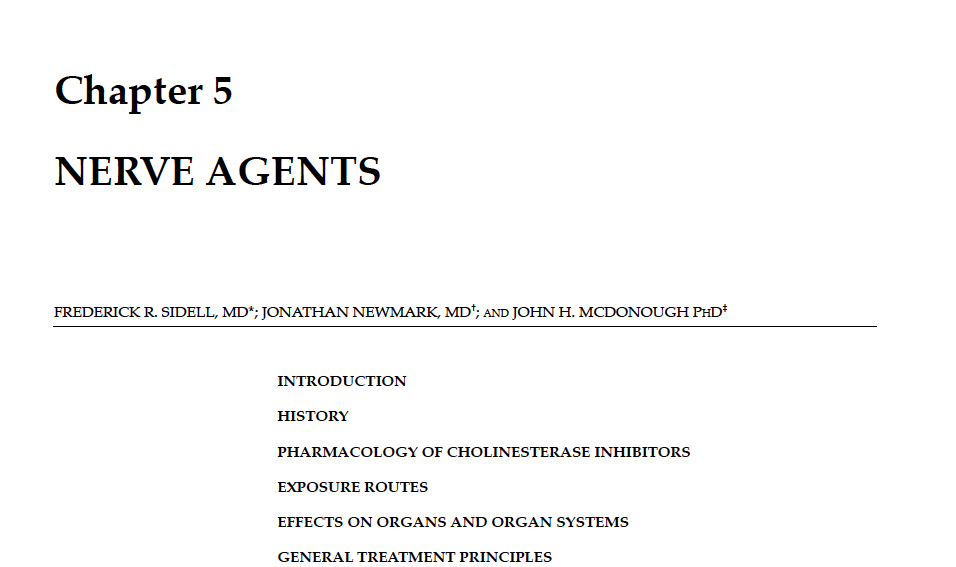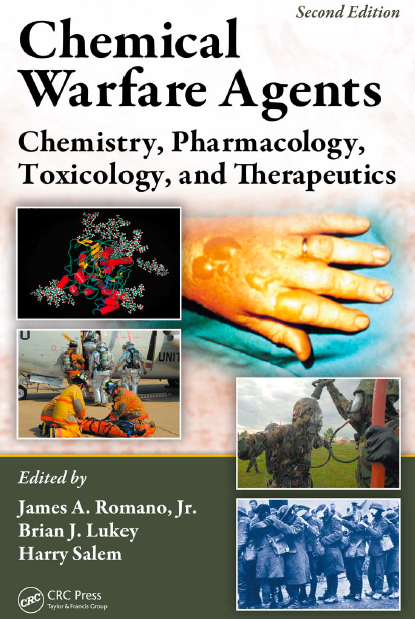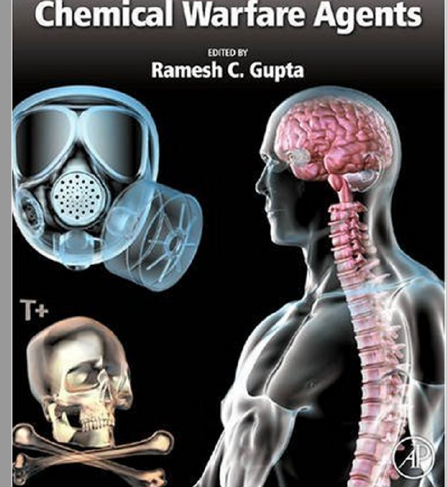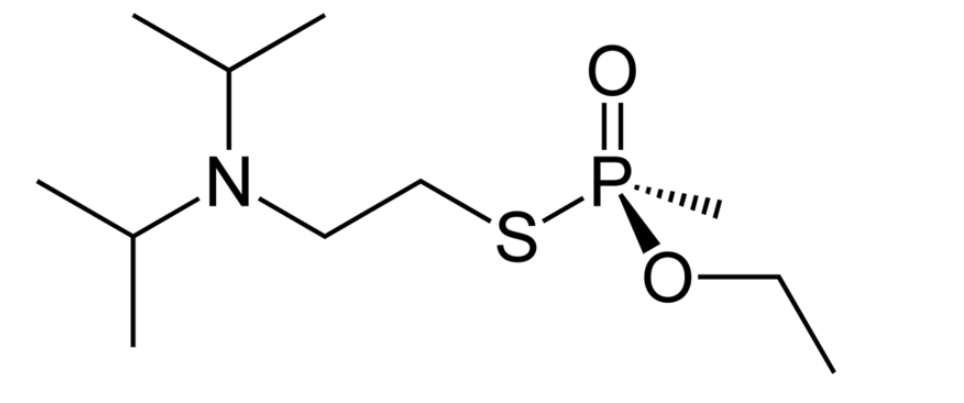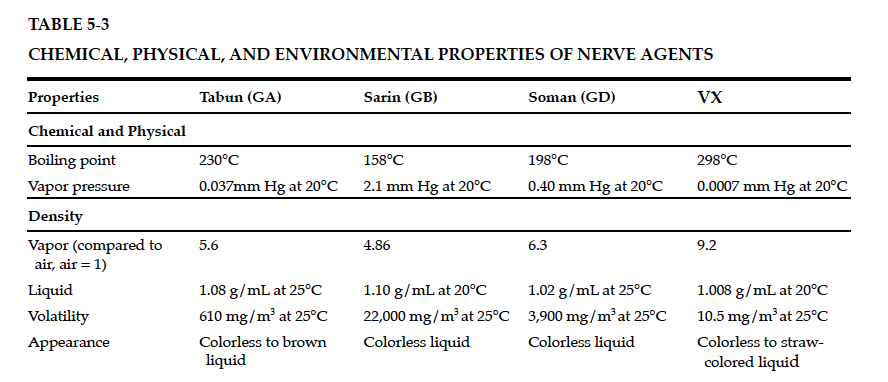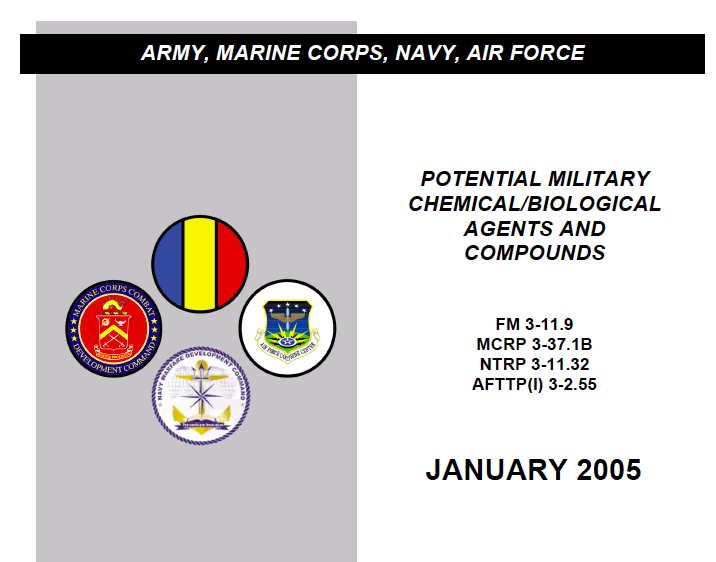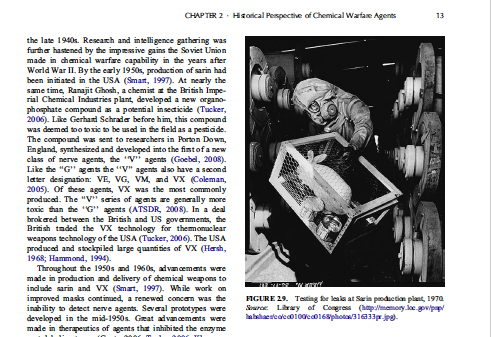OK, so I got into a bit of an argument. But it is a serious question despite how the argument degraded. How poisonous is the nerve agent VX to humans? Who wants to go down this rabbit hole? (Thread to evolve out of this)
OK, as I am multi-tasking (gotta make dinner later and I need to strip a guinea fowl carcass) this will take a little bit of time. And as the British Library is cut off from me, I do not have access to a few reference books. But I will do with the three main ones I do have
So, the first thing is to cite my sources. Source 1, Chapter 5 of "Medical Aspects of Chemical Warfare"
Transparency requires full disclosure. I met Dr Sidell once. I was taught a class by Dr Newmark and have exchanged a number of emails with him and quoted his work in my book. A tech that worked for Sidell worked for me in the Army.
Jeez, it's almost as if I've been around the block a few times.
Transparency / full disclosure. Gupta's more recent edition, which I don't have, footnotes me. But not on this specific subject of VX toxicity.
There's also a number of individual papers and journal articles relevant to this.
So, before I go down the rabbit hole, there's a few things people need to know. Toxicology of exotic poisons, such as VX, is a less exact science than many of you might think.
People wanting an exact answer to "how much VX kills a person" will be disappointed that the two best answers are "it depends on a lot of things" and "nobody really knows for sure"
Let me unpack this for you, with the "nobody really knows" bit coming first.
Because there's no natural or expected way for people to become exposed to the nerve agent VX, there's not a normal body of data on human VX exposures from "normal" sources as there might be, for, say, tobacco smoke or asbestos.
There's only a small handful of human VX poisonings to work from, and with than handful of cases, a lot of critical data is lacking. Also, some of them are old (1960s).
A fully statistically valid study would be hugely unethical as it would involve exposing a lot of people to VX and killing them. Heck, even the Nazis didn't do this type of study with nerve agents.
So, with VX, we are mostly left with educated estimates from studies with lab animals. Some of these studies are VERY OLD and date from an era when the measurement techniques are quite antiquated.
Everything I say herein will apply to the original UK/Swedish/USA VX, not the various copies. The Soviet copied it but ended up with a different molecule. See my book for that story.
VX is a thick oily liquid with practically no volatility. To call it "VX gas" is grossly inaccurate. It is like a 10-weight motor oil. (I've messed around with it in person.)
And when I say that it is non-volatile, I mean it. At room temperatures it has a vapour pressure significantly lower than vaseline. And, yes, I once looked up the vapour pressure of vaseline
I give you warning, at this rate, I will not get into the actual numbers until tomorrow, as I have to turn some pasta and a leftover guinea fowl carcass into supper. (Come for the nerve agents, stay for the cuisine. Or vice versa.)
Before I knock off for the evening, I am going to make a crass simplification and say that, really, with VX, there's two kinds of toxicity - theoretical toxicity and field toxicity.
But before I can even do that, I must explain for you the concept of "median lethal dose" also known as LD50. This is a fundamental convention in toxicology. Explained adequately, if not superlatively, here: https://en.wikipedia.org/wiki/Median_lethal_dose
Simply put, an LD50 is an expression of "how much poison kills half of an exposed sample". So, for example, various amount of VX were injected into relatively identical laboratory mice, and you would see how many died and how many lived.
In this scenario, the LD50 would be the dose of poison at which exactly half the mice died from the exposure to the poison.
Please note that I say poison, not toxin. VX is not a toxin.
If in doubt as to defintion of toxin, use a dictionary.
Now, this whole LD50 thing. If you were to administer, say, VX, by injection to thousands of mice, in varying doses, you'd end up with considerable data. And if you were studying, for example, a new pesticide, you might do such studies.
One thing comes up a lot in toxicology, and that's there's not always a lot of exact linear relationships. Double a LD50 dose and it isn't often a LD100. Half a LD50 dose is not usually a LD25.
There's a whole field called "probit analysis" that gets into this and that's a whole other digression.
With some poisons, there's a fairly shallow curve and a LD98 isn't much higher than an LD50 or an LD25. But with others, it's the other way round.
Now, I am pausing this thread to take up culinary duties and will resume this in the morning.
I now resume my thread on "how lethal is VX". Remember, the answer is either "it varies" or "nobody really knows because we just have animal data". But let me unpack the "it varies" bit of it.
A reminder of the physical characteristics. From Medical Aspects of Chemical Warfare (hereon referred to as MACW)
With that boiling temperature and vapour pressure, you can see why nobody should use the phrase "VX gas". At this point, I am also going to chuck in another reference, US Army Field Manual 3-11-9. It's not really the same as the other sources but it does compile some data
Now, to pick up on a theme from last night, there's what I would call "toxicity in a test tube" and "toxicity in field conditions". Toxicity in a test tube is how much of a poison, per kg of body weight, is damaging to a person or animal.
That's right. Per body weight. 10mg of a mystery poison might kill a svelte ballet dancer. Old Jethro here, of Meal Team 6 of the Gravy Seals would need a lot more than 10mg of the same poison.
So, for VX, the best data we can get still isn't great, but it comes from direct IV injection of VX into some lab animals. Gupta (page 54 his 2006 OP book, op cit) cites a peer reviewed LD50 of 28μg of VX per kg of body weight, by IV injection, in laboratory guinea pig.
Mind you, this a laboratory determined LD50, so half the guinea pigs would die at this dose, half would live. It should be noted that this is WITHOUT medical intervention on the guinea pigs. More on that later.
If we are to transpose this 28μg/kg IV LD50 to humans, we have to assume some degree of variance here. The arguments over just exactly how guinea pig data transfers to humans are multitudinous.
But, for arguments sake, let's say that this figure 28μg/kg IV LD50 is broadly accurate for humans. Average adult human male weight in the UK is 83kg. This would yield an approx LD50 of 2.3 milligrams.
Interestingly, in humans at least, a ketogenic diet is likely to increase that LD50, a study with a different nerve agent shows
See: Langston JL, Myers TM (2011) Diet composition modifies the toxicity of repeated soman exposure in rats. Neurotoxicology 32:907–915
See: Langston JL, Myers TM (2011) Diet composition modifies the toxicity of repeated soman exposure in rats. Neurotoxicology 32:907–915
So, if we were to assume that 2.8 micrograms per kg of body weight is roughly the LD50 in humans by IV injection, that doesn't really work in the real world for scenarios with weapons.
It's common to quote such figures and say things like a "Teaspoon of VX will kill X number of people". But it just doesn't work that way in the field.
Chemical munitions or terrorist attacks aren't getting their victims lined up with IV lines already in place. It just doesn't work that way. Route of exposure matters greatly.
"Route of exposure" means "the pathway by which the VX gets into the human body"
One of the things that made the nerve agents particularly interesting back in the day as weapons was the fact that they are deadly by multiple routes of exposure.
However, there's a lot that needs to happen between "here's a tank full of VX" and "VX in the body equal to 2.8μg/kg of body weight". There's basically three parts to this equation
Part 1: The method of dissemination. Bomb, spray tank, VX on a rag (like the KL airport), artillery shell, land mine, etc. I'm not going to get into that aspect very much, only to say that poor design can waste a lot of VX
Part 2 of the equation is how the VX behaves in the field environment between leaving it's weapon system and encountering the human body. Again, lots of variables there, and heavily related to Part 1.
If you are really interested in that stuff, I talk about it at length in my book. Also here https://www.bellingcat.com/resources/articles/2017/04/13/anatomy-sarin-bomb-explosion-part/ (albeit it's about Sarin)
Give parts one and two of the equation, let me provide an illustrative scenario. Someone is flying in a helicopter and drops a teaspoon of VX onto the city below. In theory, this teaspoon has a lot of lethal doses in it.
A teaspoon of VX is about 4.9 grams. If you go by the LD50 by injection I calculated above, this is something like 21,120 LD50 doses. But are you going to kill 21,120 people by dropping it out of a helicopter?
No. You aren't. Because it just doesn't work that way. I've messed around with VX. Really. It's an oily liquid that basically doesn't evaporate. It has viscosity.
Ah, viscosity! Something that we can measure! Viscosity is measured in several ways. One unit of measure is the Poise.
The viscosity of water at 20 deg C is 0.01 Poise. The viscosity of heavy motor oil (varies) is about 6.6 poise. The viscosity of glycerine is 14.9
We have viscosity figures for VX. It's about 10 x the viscosity of water at 25 deg C and about 30 x the viscosity of (liquid) water at 0
Now, I am not the best expert in fluid mechanics. I'm the wrong Kaszeta for that. @kaszeta may help you.
All this really shows us is that a teaspoon and a helicopter are not an ideal way to disseminate VX as a weapon. This is a side diversion from the real discussion - routes of entry

 Read on Twitter
Read on Twitter